How Two Young Engineers From Gujarat Built a Rs 9 Lakh/Kg Indoor Saffron Business
What if one of the world’s most luxurious spices could be grown far from its traditional home in Kashmir, not in the soil, but indoors?
Saffron, often called “red gold”, is treasured across the globe for its vivid colour, delicate threads, and rich aroma. For centuries, it has thrived in the chilly climes of Kashmir. But now, this precious spice is beginning to bloom in unlikely places, thanks to a new generation of innovators who see its potential beyond tradition.
At the forefront of this change are two friends from Gujarat — Subhash Kanetiya and Ashish Bavaliya — who dared to ask a bold question: Can saffron grow in a lab, in the heart of western India?
Driven by curiosity and a shared love for agriculture, the duo began experimenting with indoor saffron farming in temperature-controlled environments, something never before attempted in their region.
Subhash, who holds degrees in both biotechnology and agriculture, teamed up with Ashish, a fellow agri-tech student he met at Navsari Agricultural University. What started as a student project soon blossomed into a pioneering venture that could reshape how India grows saffron.
Subhash, a 23-year-old from Bhadravadi village in Bhavnagar, had always wanted to break away from traditional farming, which was the mainstay of his family. His parents were traditional farmers, growing groundnuts, millets, and vegetables like cabbage and cauliflower on their family land.
“I wanted to do something different in farming,” he says. While studying in Surat, he came across a research paper about saffron farming in Iran. “I saw how they were growing saffron on a large scale, and I thought, why not try this in Gujarat? It felt like the perfect opportunity to bring something new to the table,” he tells The Better India.
‘I always wanted to try something unconventional in agriculture’
“I did some research on indoor saffron farming, and the idea of growing this spice in a controlled environment fascinated me,” he recalls. “I saw it as a chance to revamp farming in Gujarat, where the climate doesn’t naturally support saffron cultivation. I researched everything about this farming, including the methods used in Iran, where the spice is grown on a large scale.”
Ashish, 25, from Hamapur village in Amreli district, showed equal interest when his friend discussed the idea with him. He came from a cotton-farming background, but the desire to do something different in agriculture burnt brightly in him as well. “I always wanted to try something unconventional in agriculture, and saffron seemed like the perfect challenge,” he adds.
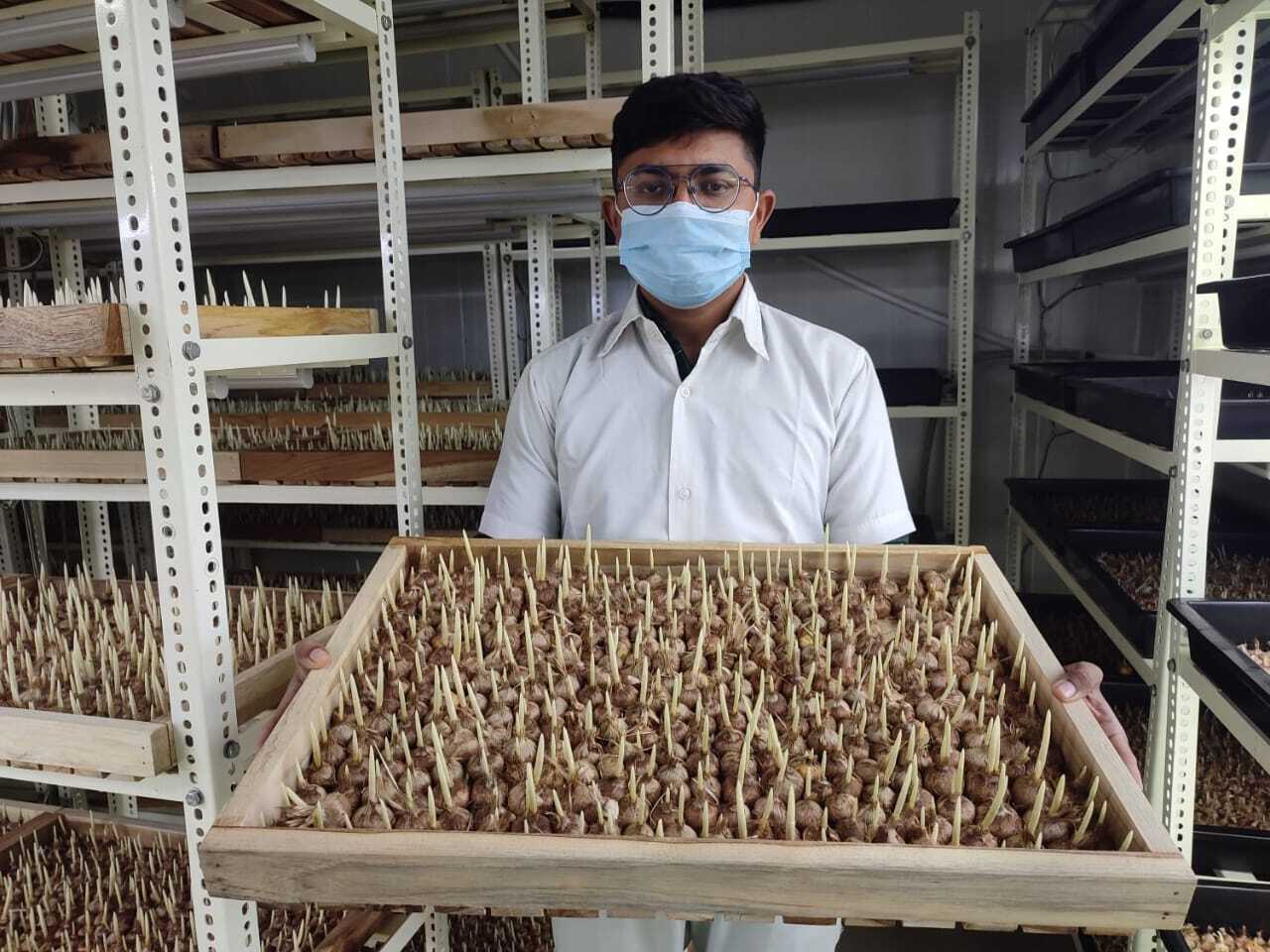 In 2022, the duo took their first step towards making indoor saffron farming a reality
In 2022, the duo took their first step towards making indoor saffron farming a reality
In 2022, the duo took their first step towards making indoor saffron farming a reality. With limited resources but a great deal of enthusiasm, they started their pilot project in a 50-square-foot room on Ashish’s farm in Amreli.
Neither of them had practical experience in saffron farming, but their academic backgrounds and intense research gave them the knowledge they needed.
To kickstart their saffron farming journey, the two friends sourced 10 kg of saffron bulbs for Rs 800 per kg from a local vendor in Kashmir. “We found the bulbs online and decided to buy them directly from Kashmir, where saffron is grown traditionally in India,” Subhash explains.
With the bulbs in hand, they made an initial investment of Rs 30,000 to set up their system. “The money went into buying equipment like air conditioning, a humidifier, and wooden trays,” Ashish says. “We chose aeroponics because it doesn’t need soil, which makes it perfect for indoor farming,” he adds.
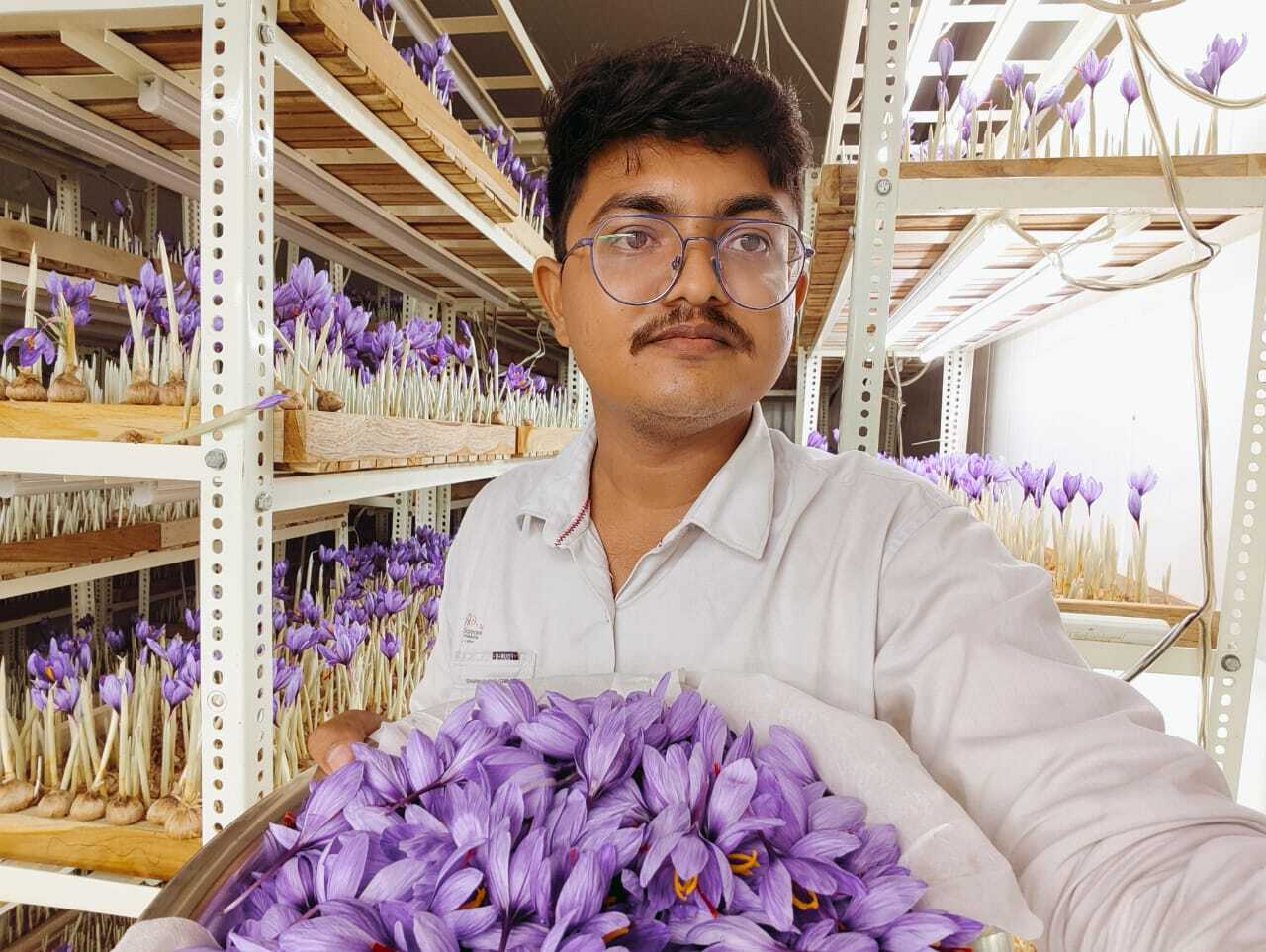 In 2023, they launched Hightech Agribiotech, a company dedicated to indoor saffron farming
In 2023, they launched Hightech Agribiotech, a company dedicated to indoor saffron farming
Aeroponics is a method where plants are suspended in the air, with their roots misted by a nutrient-rich solution. “It’s a cleaner and more efficient way of growing, and it allowed us to experiment with saffron in a controlled environment,” he explains.
“Our setup included a 3×10-foot chilled fridge to maintain the right temperature, humidifiers to keep the air moist, and wooden trays with holes to hold the bulbs,” explains Subhash. The initial investment also included costs for a generator for an uninterrupted power supply and grow lights.
The first few weeks were challenging. The duo worked tirelessly, managing their time between the project and other commitments. Subhash was working in the marketing department of a local pesticide company while trying to keep the saffron project afloat. However, within 15 days after planting, they saw the first sprout appear.
“We were not sure if it would work, but when we saw that first flower, we knew we were on the right track,” says Ashish.
A blooming miracle in a 216 sq ft room
With the success of their pilot project, the young entrepreneurs were ready to scale up their venture. In 2023, they launched Hightech Agribiotech, a company dedicated to indoor saffron farming. This time, they made a much larger investment, totalling Rs 13 lakh, pooling funds from family, relatives, and friends, and expanded to a 216-square-foot room at Ashish’s farm.
The bulk of the investment went into purchasing saffron bulbs, as they decided to purchase 500 kg of bulbs, priced at Rs 900-1,000 per kg. The rest of the money went into enhancing their infrastructure, like improving temperature control, adding more humidifiers, and upgrading their grow lights.
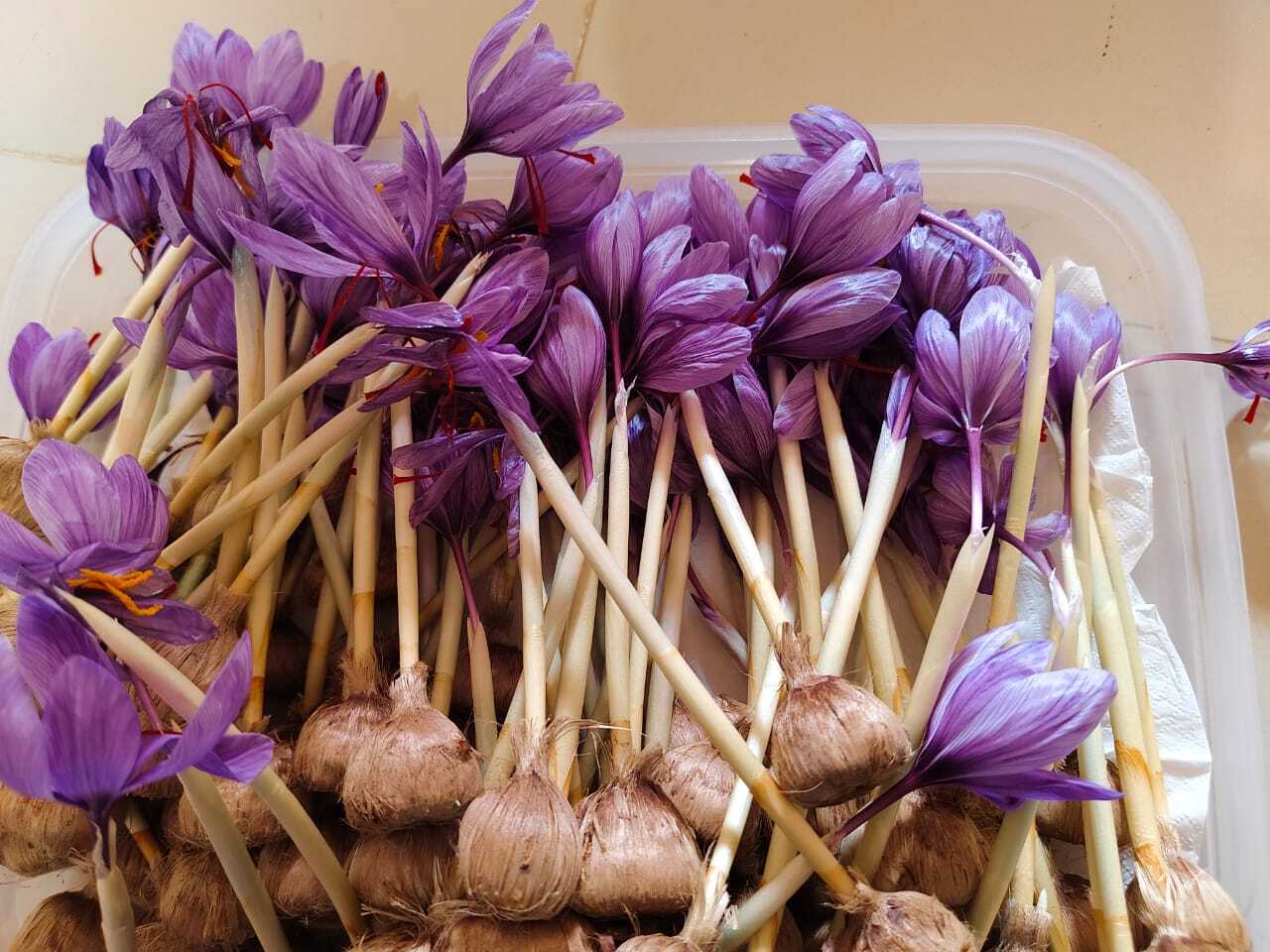 Saffron flowers best at temperatures between 17 and 25 degrees Celsius
Saffron flowers best at temperatures between 17 and 25 degrees Celsius
“We had learnt a lot from the pilot project, so when we moved to the larger scale, we were more confident,” says Subhash. The new setup included air conditioning, a generator for backup power, a humidifier to add nutrient-rich moisture to the air, and wooden trays with holes.
Once the setup was in place, they planted the saffron bulbs in July 2023. “Within 15-20 days, we saw the first sprouts appear,” he explains. As the days went on, the flowering process began around 50 days later, in early September. “The flowering started right on schedule, which was really exciting,” Ashish adds. “We learnt that saffron flowers best at temperatures between 17 and 25 degrees Celsius, so we made sure our setup was just right.”
The harvest cycle, which typically lasts around three to four months, was completed in November during their first year. “In our first year, we managed just one harvest and were able to produce one kg of saffron,” Subhash recalls.
By 2024, they were ready to push further. “In our second year, we decided to go for two harvests,” says Ashish. “The first one ran from August to November, and the second one from March to June.” In total, they harvested two kg of saffron last year. “Considering this was only our second year, it felt like a huge achievement for us,” he adds.
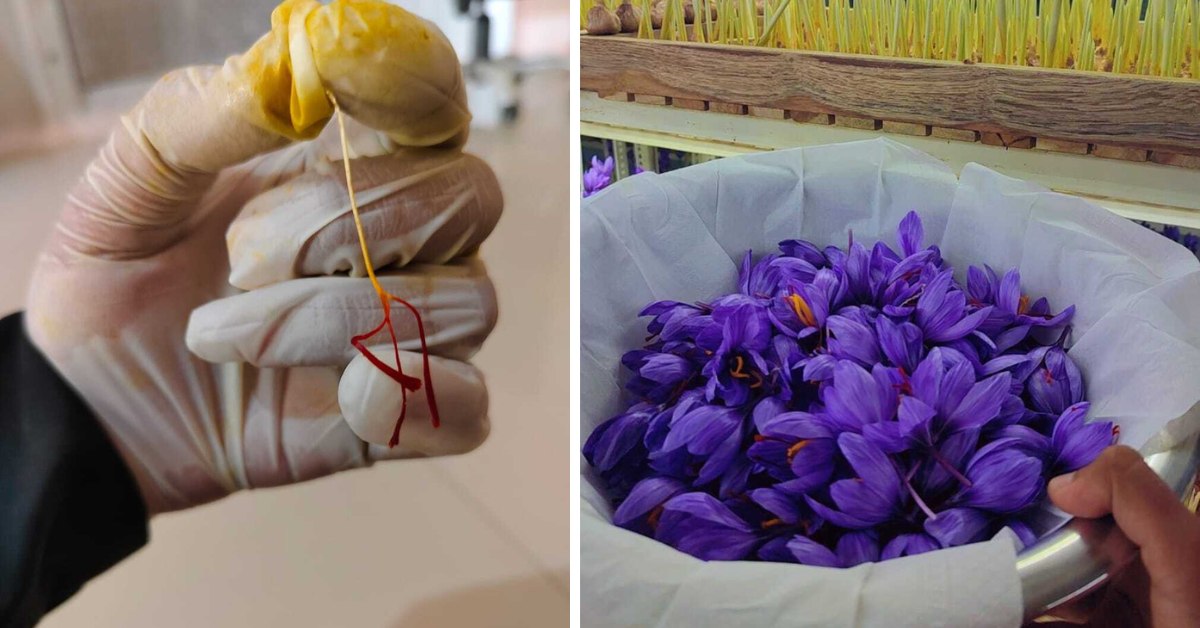 In total, they harvested two kg of saffron in 2024
In total, they harvested two kg of saffron in 2024
They also focus on multiplying the saffron seeds (popularly known as saffron bulbs). “Saffron bulbs, or Crocus Sativus, multiply naturally through corms, which are small bulbs that grow around the mother bulb,” the 23-year-old entrepreneur explains. “In spring, the mother bulb produces smaller daughter corms, which take nutrients from it. By the end of spring, the mother bulb is used up by the daughter corms, and in the fall, the new corms bloom into flowers.”
To ensure the bulbs grow healthy, they use a special compost mix of coco peat and vermicompost. “We also make sure the conditions are just right, including temperatures between 17 and 25 degrees Celsius and 12-14 hours of light each day, to help the corms grow well,” he adds. This approach ensures a steady supply of bulbs for future harvests and also for selling.
No mentors, just the internet: How YouTube and research papers became their guides
The journey to success posed its own risks and obstacles for the two young entrepreneurs. The duo spent months researching aeroponics and temperature control systems to ensure their setup was optimised for saffron cultivation. With no one around them doing the same kind of farming, they had to rely heavily on online research and academic papers.
“We spent hours watching YouTube videos, learning from others’ experiences, and diving deep into research papers. It was a lot of trial and error, but those resources gave us the knowledge we needed to make our system work,” explains Subhash.
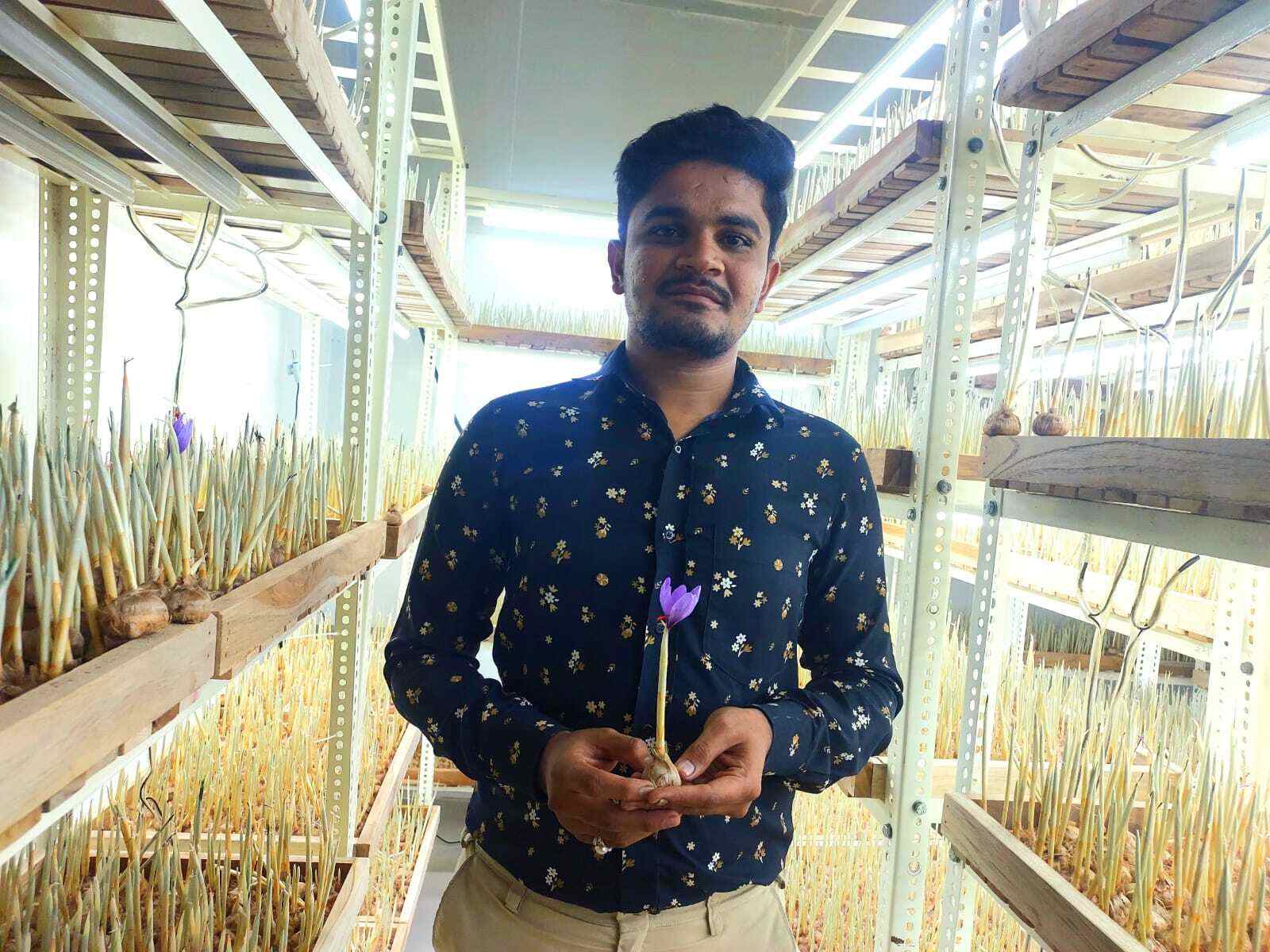 The duo sells their saffron at Rs 900 per gram, around Rs 9 lakh per kilogram
The duo sells their saffron at Rs 900 per gram, around Rs 9 lakh per kilogram
Their hard work began to pay off when they started their sales online. The demand for their saffron grew, and they found ways to sell it through social media platforms like Instagram, Facebook, and LinkedIn. Their saffron is not only being sold across India but is also reaching customers in London, with international courier services helping them ship it overseas.
“Social media has become our most powerful marketing tool,” Subhash explains. “It allows us to connect directly with buyers and build a loyal customer base. While I handle the marketing and sales side of things, Ashish focuses on the cultivation and management of the saffron.”
The duo is now earning a solid income from their saffron production. They sell their saffron at Rs 900 per gram, around Rs 9 lakh per kilogram. It took them approximately a year to earn back their initial investment. In addition, they are selling saffron seeds, priced at Rs 900-1,000 per kg, and offering training to aspiring saffron farmers.
‘We are dedicated to teaching saffron farming to help people in Gujarat’
Ramesh, a local farmer who lives near Ashish’s house, attended the saffron farming training, and he says, “Before I learnt about it, I had no idea saffron could be grown indoors. I always thought it was specific to the Kashmir climate. After taking the training, I decided to give it a try at home, and I realised that it was not as difficult as I imagined, if you understand the right temperature and conditions. With the knowledge and seeds I received, I was able to start growing saffron, and now it has become a steady source of income for me.”
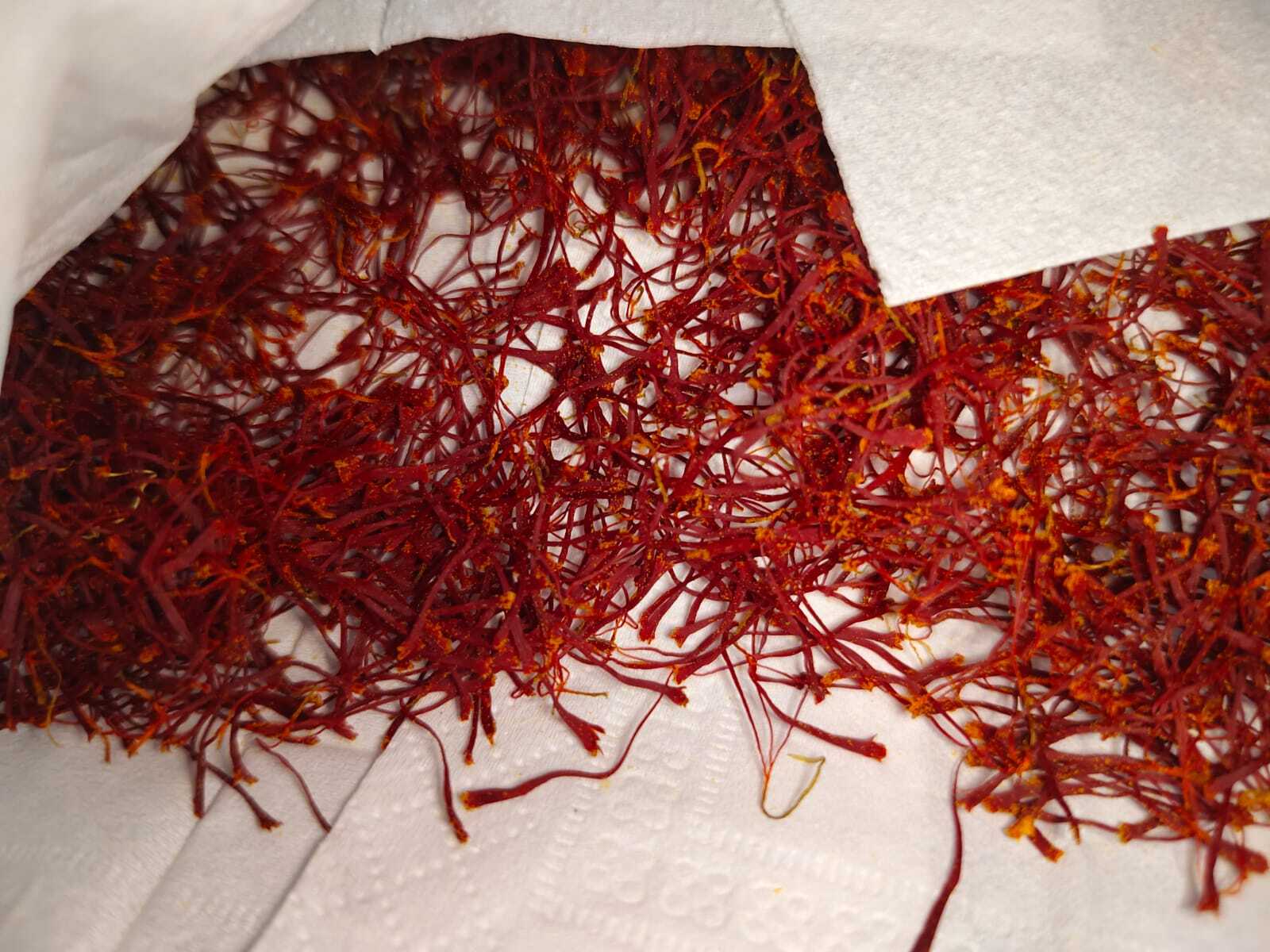 They also offer saffron farming training to interested farmers
They also offer saffron farming training to interested farmers
“We are dedicated to teaching saffron farming to help people in Gujarat create sustainable incomes through it,” says Ashish. “We have trained 200 people so far, starting from 2023, including students from agricultural courses and local farmers who wanted to explore something new.”
“We are happy we chose not to follow the traditional farming route. While the initial expenses for growing this crop in our region were higher, the rewards have been worth every investment,” shares Subhash. Their journey into experimental farming taught the young duo the value of taking risks, and today, they are not only reaping the benefits but also empowering others to take bold steps in their agricultural ventures.
Edited by Leila Badyari; All pictures courtesy Subhash Kanetiya and Ashish Bavaliya
News